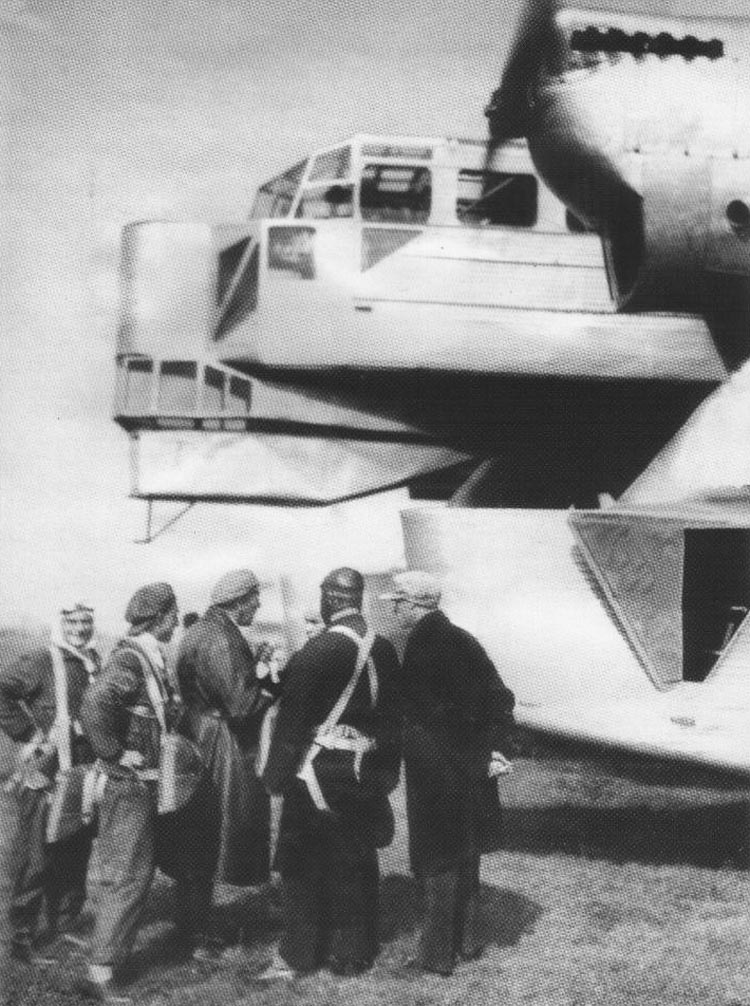
The Kalinin K-7 was an ambitious and innovative aircraft developed in the early 1930s in the Soviet Union by Konstantin Kalinin. It was designed to serve multiple roles, intended to function both as a heavy bomber and a passenger aircraft, capable of carrying either 120 passengers or 112 paratroopers. Its distinctive configuration, featuring twin booms and large underwing pods that housed fixed landing gear and machine gun turrets, set it apart from conventional aircraft of the time.
Constructed primarily from Soviet-made steel, the K-7 stood as a symbol of Soviet engineering and self-reliance. The project was well supported by the Soviet government; the first prototype was completed in 1933, embodying the Soviet Union’s ambition to showcase its technological prowess and military might. Despite its groundbreaking design, the K-7 faced challenges and was ultimately not put into mass production, but its legacy remains a bold testament to Soviet aviation innovation.
Kalinin K-7: Technical Specifications

The Russian Kalinin K-7 was designed in Kharkiv, Ukraine, in a design bureau run by Konstantin Kalinin. The aircraft’s development began in 1931, and its completion took two years, leading to the development of its first prototype. As the development came to a successful end, the K-7 first took to the skies on August 11, 1933, from Kharkiv with Soviet test pilot Mikhail Gromov. The flight was very brief and revealed some severe issues, including instability and serious vibration caused by the resonance between the airframe and engine frequencies.


The critical design flaws discovered during the flight were rectified by making some modifications which included a shorter and stronger tail boom. Post modification, the Kalinin K-7 bomber completed another seven test flights until another unfortunate crash due to structural failure of one of the tail booms on November 21, 1933. The accident killed 14 of the 20 people on board and one on the ground. However, the Soviets still had faith in the project and continued with an order for two more prototypes within the same year.
Design Features

The K-7 was one of the biggest aircraft built before the jet era and was popular because of its unusual arrangement of six engines on the wing leading edge and a single engine in the rear. However, the initial design called for six engines only, but as the project proceeded, two more engines were added to the trailing edge. The aircraft also featured a massive wingspan of 53 meters (174 feet) along with its twin-boom configuration. The passenger version was famous for its accommodating capacity and chrome-molybdenum steel airframe. In contrast, the bomber version was armed with 20mm cannons and multiple machine guns and could carry up to 21,200 lbs of bomb payload.
General Specifications
| Type | Heavy Bomber |
| Manufacturer | Konstantin Alekseevich Kalinin |
| Engine | 7× Mikulin AM-34F V-12 liquid-cooled piston engines, 750 hp each |
| Weight | |
| Empty | 53,793 lb |
| Maximum Take-off | 102,515 lb |
Dimensions
| Wingspan | 53 m |
| Length | 28 m |
| Height | 12.4 m |
Performance
| Wingspan | 53 m |
| Length | 28 m |
| Height | 12.4 m |
Top Kalinin K-7 Milestones

The K-7 completed seven test flights in total, with its last flight on November 21, 1933, which ended in disaster. Even though there were orders for two more prototypes, the project did not proceed after the accident and was canceled in 1935. One of the major reasons behind the cancellation was a suspicion of political sabotage, hinting towards the crash not entirely being an accident but an intentional conspiracy. However, the exact cause of the crash remains unclear, ranging from technical flaws to sabotage. There are no surviving models of the K-7 that exist today, but it remains an inspiration for its groundbreaking size and design.
Related Articles
"Haritima Maurya, pen name, ""Another Stardust,"" has been passionate about writing since her school days and later began sharing her work online in 2019. She was drawn to writing because of her love for reading, being starstruck by the art of expression and how someone can make you see and feel things exclusive to their experience. She wanted to be able to do that herself and share her mind with world cause she believes while we co exist in this beautiful world least we can do is share our little worlds within.
As a commercial pilot, Haritima balances her passion for aviation with her love for storytelling. She believes that, much like flying, writing offers a perspective beyond the ordinary, offering a bridge between individual experiences and collective understanding.
Through her work, ""Another Stardust"" aims to capture the nuances of life, giving voice to moments that resonate universally. "











Superb, interesting article .
Thank you
Gary